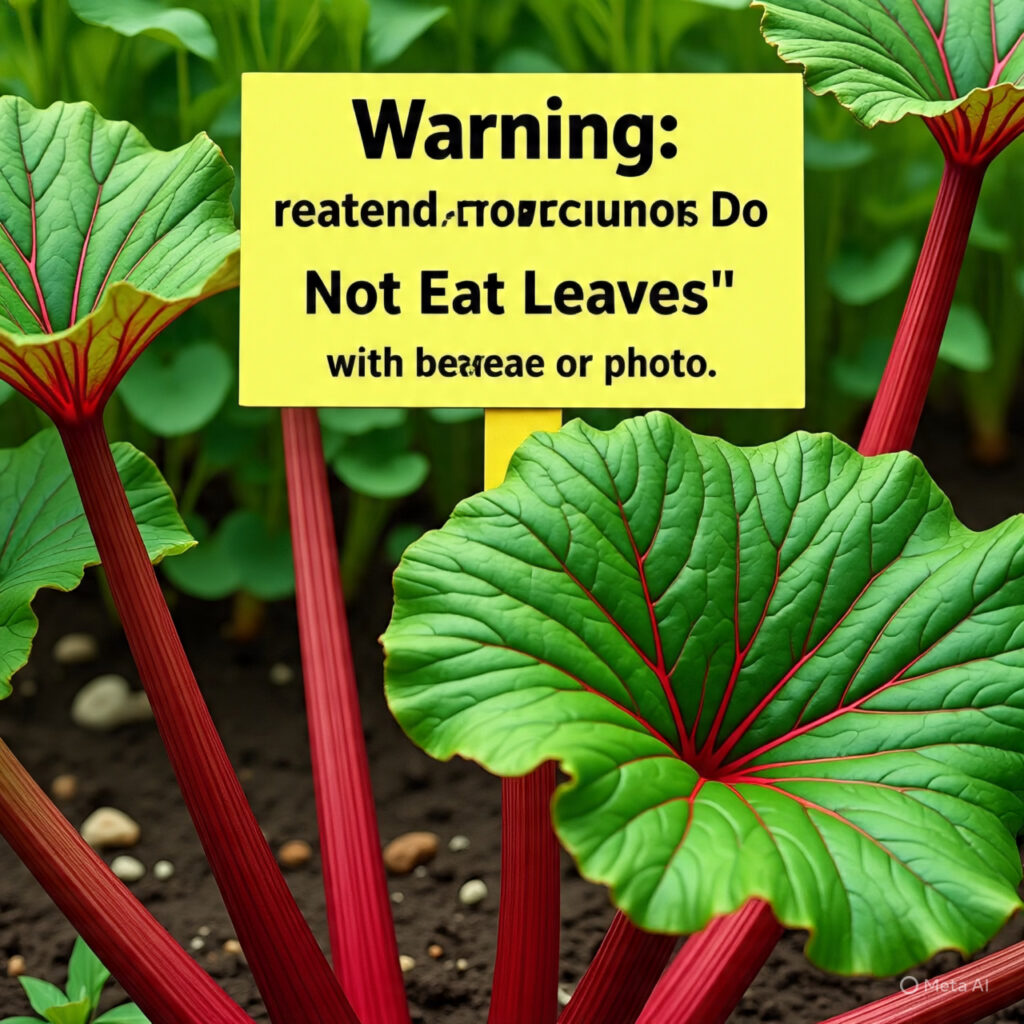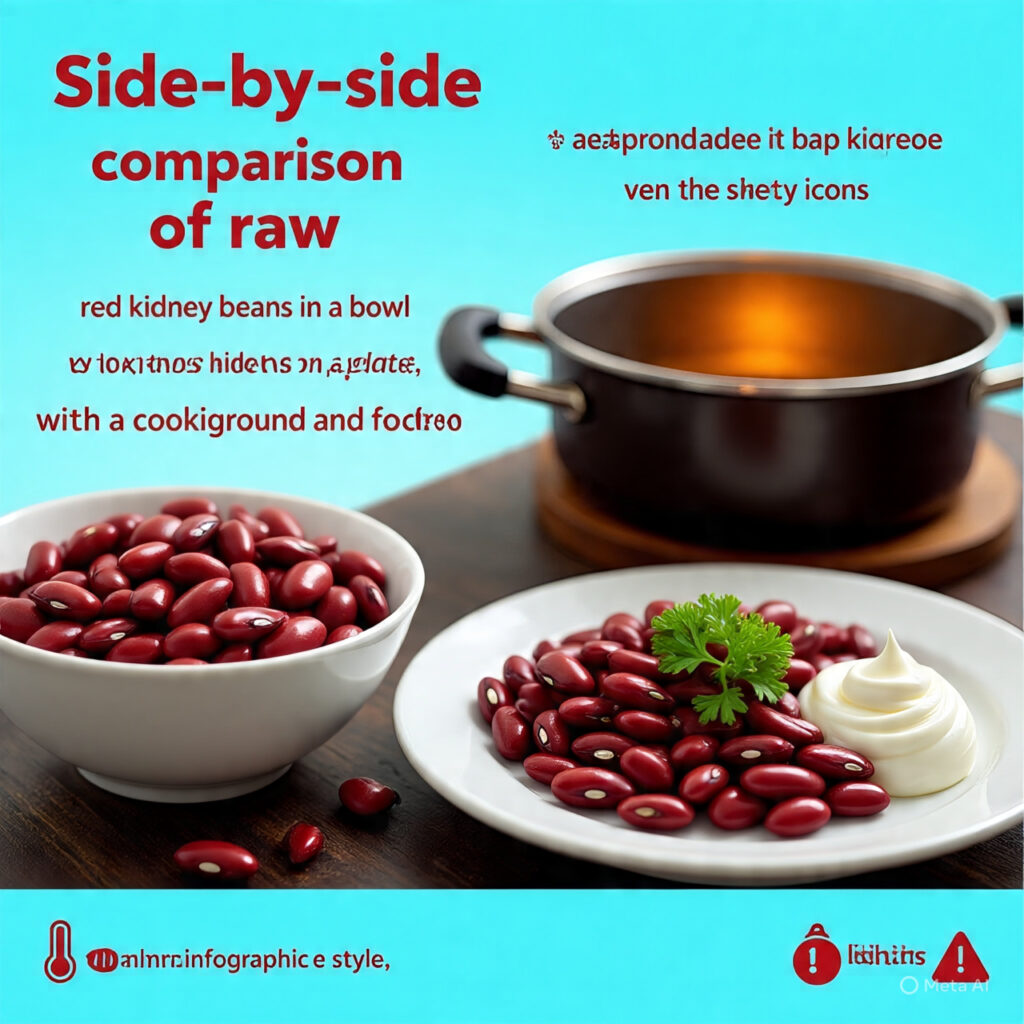5 deadly foods still commonly consumed today may look harmless, but they can kill if mishandled. Imagine a common food item that, if prepared incorrectly, could send you to the emergency room… or worse. While we trust that the foods on our plates are safe, some ingredients harbor hidden dangers that have claimed lives throughout history. These aren’t exotic poisons from distant lands – they’re foods that people still encounter, purchase, and sometimes fatally mishandle in kitchens around the world.
The shocking reality is that nature has equipped many plants and animals with powerful toxins as defense mechanisms. When these natural compounds enter our food supply through improper preparation, inadequate cooking, or simple ignorance, they can transform a meal into a medical emergency. From the tetrodotoxin lurking in pufferfish to the cyanogenic compounds hiding in cassava roots, deadly substances exist in foods that millions consume regularly.
At Health Morph, our mission is to empower you with life-saving knowledge that could mean the difference between a delicious meal and a tragic accident. Today, we’re uncovering 5 such foods – ingredients that, without the right knowledge, can become deadly weapons on your dinner table.
In this comprehensive guide, you’ll learn to identify these dangerous foods, understand the specific toxins they contain, recognize the symptoms of poisoning, and most importantly, discover the exact safety protocols that can protect you and your family. Knowledge is your first line of defense against these hidden threats.
CRITICAL DISCLAIMER: If you ever suspect food poisoning, seek emergency medical attention immediately. Call 911 or your local emergency services without delay.
The Toxin Trap: Why Everyday Foods Turn Lethal
Throughout evolution, plants and animals have developed sophisticated chemical defense systems to protect themselves from predators. These natural toxins serve as biological weapons, designed to deter consumption through unpleasant tastes, digestive distress, or in extreme cases, death. Unfortunately, humans have learned to appreciate some of these defended species for their unique flavors, textures, or nutritional benefits.
The fundamental principle of toxicology states that “the dose makes the poison.” This means that the amount consumed, the concentration of the toxin, and individual sensitivity all determine whether a substance will cause mild discomfort or prove fatal. Some toxins are so potent that even microscopic amounts can trigger life-threatening reactions, while others require substantial quantities to cause harm.

Improper preparation is the primary culprit behind most food-related poisoning incidents. Critical factors include cooking temperature and duration, removal of specific toxic parts, proper soaking or fermentation processes, and understanding the maturity or variety of the ingredient. A single oversight in preparation can concentrate toxins to lethal levels or fail to neutralize them entirely.
The biggest risk factor for accidental poisoning is ignorance. Many people consume dangerous foods without understanding the specific preparation requirements that make them safe. Traditional knowledge about food safety has been lost in many cultures, leaving modern consumers vulnerable to mistakes that previous generations would have instinctively avoided.
The 5 Deadly Foods People Still Eat (and Your Life-Saving Guide)
1. Fugu (Pufferfish)
The Hidden Killer: Tetrodotoxin, one of the most potent neurotoxins known to science, is concentrated in the liver, ovaries, skin, and intestines of pufferfish. This compound blocks sodium channels in nerve cells, preventing nerve signal transmission throughout the body. Just 1-2 milligrams can kill an adult human within hours.
Why It’s Still Consumed: Fugu is considered the ultimate delicacy in Japanese cuisine, prized for its unique texture and the subtle tingling sensation it produces when trace amounts of tetrodotoxin remain. The preparation and consumption of fugu is deeply rooted in Japanese culinary tradition, representing both skill and bravery.
Symptoms of Poisoning:
- 0-30 minutes: Numbness around the mouth and lips, dizziness, nausea
- 30-60 minutes: Spreading paralysis, difficulty speaking, muscle weakness
- 1-6 hours: Respiratory paralysis, cardiac arrest, death (consciousness often remains until the end)
The Life-Saving Protocol: NEVER attempt to prepare fugu at home under any circumstances. Only licensed fugu chefs who have completed rigorous training (typically 2-3 years) and passed government examinations should handle this fish. Even experienced chefs occasionally make fatal mistakes. If you wish to experience fugu, only visit licensed restaurants in Japan with certified chefs. The risk is never worth taking with amateur preparation.

Real-World Warning: Despite strict regulations, fugu poisoning still occurs annually in Japan, with most cases involving unlicensed home preparation or consumption of improperly prepared fish from unregulated sources.
2. Cassava (Yuca/Tapioca)
The Hidden Killer: Cyanogenic glycosides, particularly linamarin and lotaustralin, are found throughout the cassava plant but concentrate in the roots. When these compounds are broken down by enzymes or stomach acid, they release hydrogen cyanide, which blocks cellular respiration and can cause rapid death.
Why It’s Still Consumed: Cassava is a staple food for over 800 million people worldwide, particularly in Africa, South America, and Asia. It’s drought-resistant, grows in poor soil, and provides essential carbohydrates. The sweet variety contains lower toxin levels, while bitter cassava contains much higher concentrations.
Symptoms of Poisoning:
- 30 minutes-2 hours: Nausea, vomiting, abdominal pain, diarrhea
- 2-6 hours: Rapid breathing, elevated heart rate, confusion, weakness
- 6-24 hours: Difficulty breathing, seizures, coma, cardiac arrest
The Life-Saving Protocol:
- Never consume raw cassava in any form
- Peel completely – remove all skin and outer layers where toxins concentrate
- Soak sliced cassava in water for 4-6 hours, changing water twice
- Boil vigorously for at least 15-20 minutes, or bake at 375°F for 45+ minutes
- Discard all cooking water – never reuse it for other purposes
- Avoid bitter varieties unless you have extensive traditional knowledge of preparation
Real-World Warning: Chronic cassava poisoning causes konzo, a permanent paralytic disease affecting thousands in Africa. Acute poisoning has caused mass casualties when proper preparation methods are ignored during food shortages.
3. Raw/Undercooked Kidney Beans
The Hidden Killer: Phytohaemagglutinin (PHA), a lectin protein found in high concentrations in red kidney beans, causes red blood cells to clump together and triggers severe inflammatory responses. Raw kidney beans contain 20,000-70,000 hemagglutinating units (HAU) per gram, while properly cooked beans contain only 200-400 HAU.
Why It’s Still Consumed: Kidney beans are protein-rich, affordable, and versatile. Many people use slow cookers or insufficient cooking methods, unaware that these don’t reach temperatures high enough to destroy the lectin. The beans may appear cooked but retain dangerous toxin levels.
Symptoms of Poisoning:
- 1-3 hours: Severe nausea, explosive vomiting, diarrhea
- 3-6 hours: Abdominal cramping, dehydration, weakness
- 6-12 hours: Symptoms typically resolve, but hospitalization may be required
The Life-Saving Protocol:
- Soak dried kidney beans for at least 5 hours or overnight
- Discard soaking water and rinse thoroughly
- Boil vigorously for at least 10 minutes – this is absolutely critical
- Reduce heat and simmer for 45-60 minutes until tender
- Avoid slow cookers – they don’t reach sufficient temperatures (212°F/100°C)
- Use canned beans if unsure – they’re pre-cooked and safe

Real-World Warning: Slow cooker poisoning incidents spike during winter months when people attempt to make bean stews. Even 4-5 undercooked beans can cause severe illness. White kidney beans contain similar but lower toxin levels.
4. Rhubarb Leaves
The Hidden Killer: Oxalic acid and anthraquinone glycosides concentrate in rhubarb leaves at levels 10-40 times higher than in the edible stalks. Oxalic acid binds with calcium in the blood, causing kidney damage and potentially fatal electrolyte imbalances.
Why It’s Still Consumed: Confusion about which parts of the rhubarb plant are edible leads to accidental consumption. Some people mistakenly believe that if the stalks are safe, the leaves must be as well. During food shortages, desperate people have attempted to eat the leaves.
Symptoms of Poisoning:
- 30 minutes-2 hours: Burning sensation in mouth and throat, difficulty swallowing
- 2-6 hours: Severe abdominal pain, nausea, vomiting, diarrhea
- 6-24 hours: Kidney pain, decreased urination, weakness, breathing difficulties
- 24+ hours: Kidney failure, coma, death in severe cases
The Life-Saving Protocol:
- Only consume rhubarb stalks – never the leaves under any circumstances
- Remove all leaf material completely before cooking
- Trim both ends of stalks to ensure no leaf remnants remain
- Teach children to never eat rhubarb leaves, even small amounts
- Dispose of leaves safely – don’t compost them where children or pets might access them
Real-World Warning: During World War I, rhubarb leaves were recommended as a food source in Britain, leading to several deaths before the danger was recognized. Even today, poisoning cases occur when people mistake the leaves for edible greens.
5. Wild Mushrooms (Death Cap – Amanita phalloides)
The Hidden Killer: Amatoxins, including α-amanitin and β-amanitin, are heat-stable toxins that cannot be destroyed by cooking. These compounds inhibit RNA polymerase, preventing protein synthesis and causing cell death, particularly in the liver and kidneys. A single death cap mushroom contains enough toxin to kill an adult.
Why It’s Still Consumed: Death cap mushrooms are often mistaken for edible varieties, especially by immigrants who confuse them with similar species from their home countries. They have a pleasant taste and cause no immediate symptoms, leading people to believe they’re safe.
Symptoms of Poisoning:
- 6-12 hours: Severe abdominal pain, vomiting, diarrhea, dehydration
- 12-24 hours: False recovery period – symptoms may disappear
- 24-72 hours: Liver failure, kidney failure, jaundice, internal bleeding
- 72+ hours: Multi-organ failure, coma, death in 70-90% of cases
The Life-Saving Protocol:
- Never eat wild mushrooms unless identified by a certified mycologist
- “When in doubt, throw it out” – this rule saves lives
- Don’t trust apps or books for identification – they’re unreliable
- Avoid foraging in areas where death caps grow (under oak trees, especially)
- Buy from reputable suppliers – stick to grocery stores and farmers markets
- Teach children never to touch or taste wild mushrooms
Real-World Warning: Death cap poisoning cases surge during mushroom season, particularly affecting immigrant communities. California sees multiple deaths annually from death cap consumption. No antidote exists – only aggressive medical support can potentially save victims.

General Principles for Avoiding Food-Borne Poisons
Knowledge is Power: Educate yourself thoroughly about any unusual ingredients before preparation. Research traditional preparation methods and understand why specific steps are necessary.
Source Wisely: Only purchase foods from reputable suppliers who understand proper handling and storage. Avoid suspicious, unlabeled, or improperly stored ingredients from unknown sources.
Follow Instructions Precisely: Adhere strictly to preparation guidelines for potentially dangerous foods. Don’t take shortcuts or assume that “close enough” is safe enough.
“When in Doubt, Throw It Out”: This simple rule has prevented countless poisoning incidents. The cost of discarded food is nothing compared to the cost of emergency medical treatment.
Avoid Foraging Without Expertise: Never harvest wild mushrooms, berries, or other plants unless you have extensive training and experience. Even experts make mistakes.
Immediate Action: What to Do If You Suspect Poisoning
Call Emergency Services Immediately: Dial 911, 112, or your country’s emergency number as your first action. Contact your local poison control center for additional guidance.
Do NOT Induce Vomiting unless specifically instructed by medical professionals. Some toxins can cause additional damage when vomited.
Save a Sample: If possible and safe, collect a small sample of the suspected food for testing. This can help medical professionals determine the specific toxin and appropriate treatment.
Stay Calm: Provide as much information as possible to emergency responders about what was consumed, when, and in what quantity.
Hydrate Carefully: If the person is conscious and able to swallow, small sips of water may be appropriate, but only if advised by medical professionals.
Conclusion
The shocking reality is that deadly toxins lurk in common foods that millions of people consume without proper knowledge or preparation. From the tetrodotoxin in fugu to the cyanogenic compounds in cassava, these natural poisons have claimed countless lives throughout history. However, armed with the right knowledge and strict adherence to safety protocols, you can protect yourself and your loved ones from these hidden dangers.
Understanding these risks isn’t about living in fear – it’s about making informed decisions that can save lives. Every preparation method, every safety step, and every warning in this guide represents hard-won knowledge, often learned through tragic experience.
Your safety is paramount. At Health Morph, we are committed to providing you with crucial, evidence-based health and safety information to navigate a complex world where hidden dangers exist alongside life’s pleasures.
Don’t take risks with your health. Stay informed, stay safe, and thrive! For more vital health warnings, comprehensive food safety guides, and essential well-being resources, explore the extensive knowledge base at Health Morph. Share this life-saving information with friends and family – the life you save might be their own.
In a world where a single mistake in food preparation can prove fatal, vigilance isn’t just wise – it’s essential for survival. Knowledge is your shield, preparation is your sword, and caution is your guide through the hidden dangers that surround us daily.
🔴 Share this article with your loved ones — the knowledge you pass on could save a life. Subscribe to Health Morph for more vital health insights.
📝 Edited by: Mike
✅ Fact Checked by: Dr. Neha Sharma






Leave a Reply